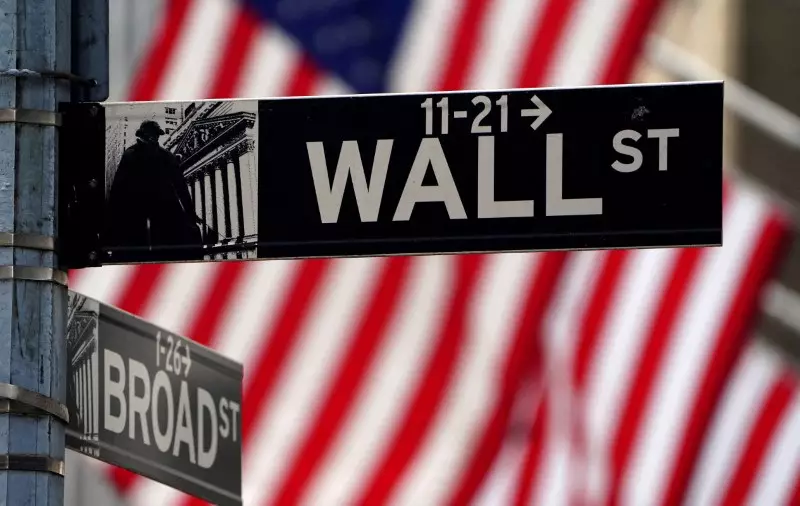As 2025 kicks off, financial markets worldwide are poised for a tumultuous week, driven by significant events from major central banks, critical earnings reports from tech giants, and the unveiling of potential new policies from U.S. President Donald Trump. These elements coalesce to create an environment of uncertainty but also opportunity, as investors navigate the changing tides of geopolitics and monetary policy.
A pivotal week lies ahead with central banks around the globe gearing up for their initial meetings of the year. The U.S. Federal Reserve (Fed) is set to convene shortly after President Trump’s reinauguration, creating expectations of a shift in monetary policy. Following a year of aggressive reductions averaging 100 basis points, analysts speculate that the Fed will pause its easing cycle during this session. Market participants are keenly interested in forward-looking statements regarding future rate cuts, especially in light of prior reassurances that inflation may not be as concerning as previously thought. The Fed’s prior communication had unnerved market players in December, showcasing a reluctance to continue with drastic cuts amid signs of economic resilience.
Meanwhile, across the Atlantic, the European Central Bank (ECB) is anticipated to announce a 25 basis point cut to interest rates. Economic indicators from the eurozone suggest sluggish growth, which could be exacerbated by potential trade tariffs introduced by the Trump administration. With the ECB’s Chief Christine Lagarde navigating these waters, investors are looking for clues on how future rate decisions might be influenced, particularly in relation to the market volatility surrounding ongoing U.S.-EU trade tensions.
The Tariff Tangle
As the tariffs debate reignites under Trump’s renewed administration, stakeholders in global trade are on edge. The looming specter of tariffs set to impose new burdens on key trading partners—Canada, Mexico, and China—heightens tensions. The stark contrast between the proposed levies, particularly the eye-watering 25% duties on Canada and Mexico juxtaposed with lower rates for China, signals a strategic positioning by the Trump administration, likely intended to re-focus negotiations in the U.S.’s favor.
Beyond mere numbers, the implications of these tariffs ripple through global markets. Investors must consider the potential impact on inflation and purchasing power, as well as the significance of upcoming negotiations around high-profile issues—such as TikTok’s future in the U.S.—that could sway market sentiments. The week leading up to the implementation of these tariffs could be a volatile one, as traders digest the news through various lenses.
Interestingly, amidst the chaos of potential government policies, the financial markets have exhibited levels of stability that might seem at odds with the broader narrative. The weeks leading to Trump’s second term have not presented the anticipated market turmoil—instead, there’s a marked reduction in volatility. Additionally, demand for risk hedging strategies involving major currencies, such as the Mexican peso and the Chinese yuan, reflects a more settled investor psyche as they adopt a wait-and-see approach.
However, this tranquility could be deceptive. Given Trump’s history of spontaneous commentary, which has often sent shockwaves through the markets, analysts suspect that the quiet period could give way to renewed volatility without warning. Investors and traders may need to brace for sudden shifts in market dynamics as the President’s offhand remarks could steer fortunes, for better or worse.
As European companies prepare to release their fourth-quarter earnings, the backdrop of U.S. policy uncertainty casts a shadow over projections. Financial performance in Europe is forecasted to yield marginal positive growth, fueled largely by sectors less influenced by Trump’s policies, such as utilities and financials. However, challenges loom, especially from energy sectors and geopolitical headwinds which cloud the broader economic outlook.
Key players like LVMH and Deutsche Bank are expected to report earnings next week, but analysts remain cautious regarding their performance relative to external pressures. Notably, a firm U.S. economy coupled with a weaker euro could offer a lifeline to European exporters, potentially buoying the earnings of businesses reliant on international markets.
Beyond the earnings reports, a survey from Bank of America hints at renewed investor optimism for European assets, despite the looming uncertainty. These insights highlight a shift where markets can flourish even amidst external stresses, reinforcing the idea that adaptability and strategic positioning will be crucial in navigating the week ahead.
As global markets prepare for a tumultuous week ahead, the interplay of central bank decisions, government policies, and corporate earnings will set the stage for significant movement in equities and currencies. Investors must remain vigilant and adaptable, ready to react to both expected and unexpected developments that could shape the financial landscape as 2025 unfolds.

